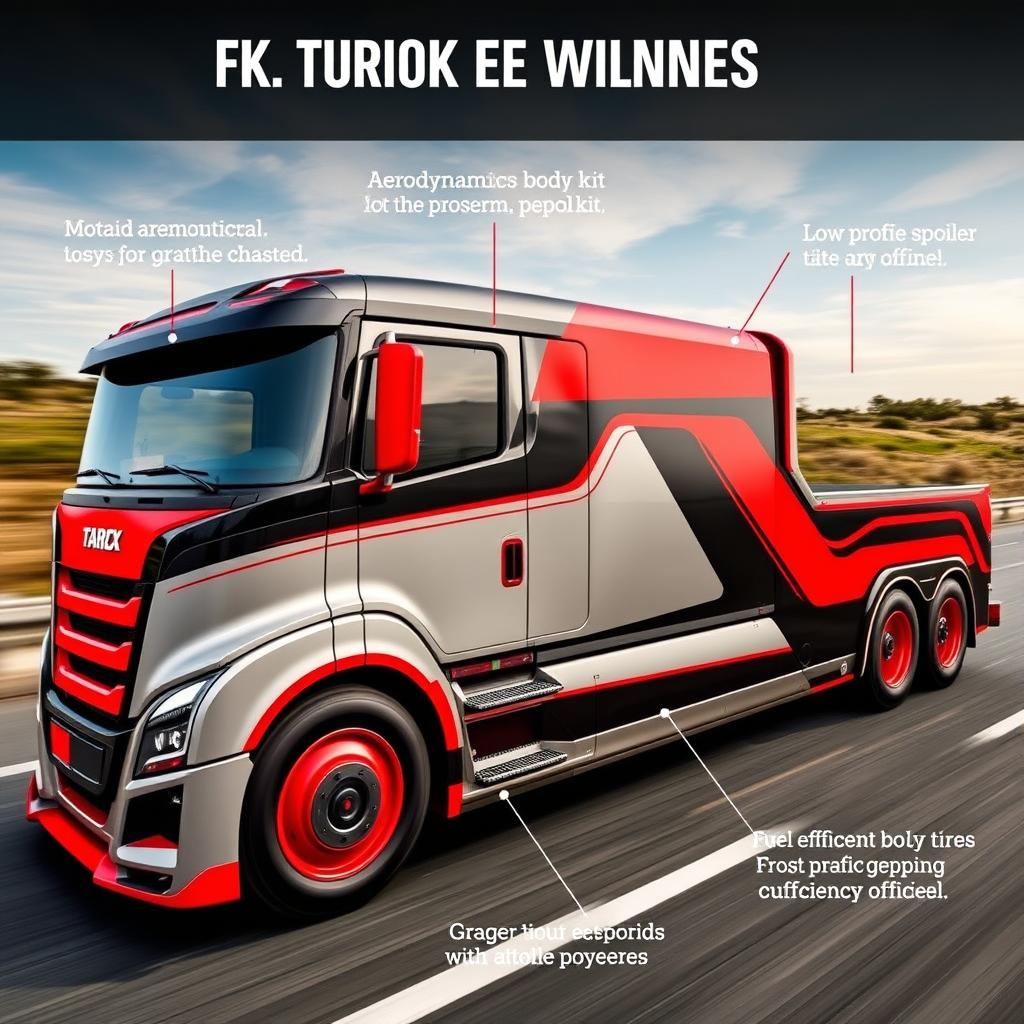Top Fuel-Saving Truck Modifications Guide
Are you tired of watching your hard-earned money disappear at the fuel pump? With the rising costs of diesel and gasoline, implementing fuel efficiency upgrades trucks has become more crucial than ever. Whether you’re an owner-operator or manage a fleet, this comprehensive guide will walk you through the most effective modifications to boost your truck’s fuel economy and reduce operating costs.
Getting the Most Miles Per Gallon: Understanding Truck Fuel Efficiency
Before diving into specific modifications, it’s essential to understand how various factors affect your truck’s fuel consumption. Fuel efficiency is influenced by aerodynamics, engine performance, rolling resistance, and driving habits. According to the U.S. Department of Energy, aerodynamic drag accounts for up to 21% of a heavy-duty truck’s fuel consumption at highway speeds.
H2: Essential Aerodynamic Modifications
Roof Fairings and Cab Extenders
One of the most effective ways to improve fuel efficiency is by reducing aerodynamic drag. Roof fairings help direct air flow over the trailer, while cab extenders minimize the gap between the tractor and trailer. These modifications can improve fuel economy by 2-3%.
Side Skirts and Under-Trailer Devices
Installing side skirts helps manage airflow along the trailer’s sides, while under-trailer devices reduce turbulence beneath the vehicle. Combined, these modifications can result in fuel savings of up to 5%.
Front Air Dams and Bumpers
Aerodynamic bumpers and air dams help direct airflow around the truck rather than underneath it, reducing drag and improving fuel efficiency by 1-2%.
H2: Engine Performance Modifications
Engine Control Module (ECM) Tuning
Professional ECM tuning can optimize your engine’s performance while improving fuel efficiency. This modification can result in 5-15% better fuel economy when properly implemented.
High-Flow Air Filters
Replacing stock air filters with high-flow alternatives allows your engine to breathe better, improving combustion efficiency and fuel economy by 2-3%.
Upgraded Fuel Injectors
Modern, high-quality fuel injectors can provide better fuel atomization, leading to more complete combustion and improved fuel efficiency of 3-5%.
H2: Rolling Resistance Improvements
Low Rolling Resistance Tires
Switching to low rolling resistance tires can reduce fuel consumption by 3-4%. These tires are designed with special compounds and tread patterns that minimize energy loss through deformation.
Tire Pressure Monitoring Systems
Maintaining optimal tire pressure is crucial for fuel efficiency. According to the EPA, proper tire inflation can improve fuel economy by up to 3%. Installing a tire pressure monitoring system helps ensure consistent pressure levels.
Wheel Alignment and Balance
Regular wheel alignment and balancing reduce rolling resistance and prevent premature tire wear, improving fuel efficiency by 1-2%.
H2: Advanced Technology Integration
Idle Reduction Systems
Installing auxiliary power units (APUs) or battery-powered HVAC systems can significantly reduce idle time, saving up to 1 gallon of fuel per hour of idling eliminated.
Route Optimization Software
Modern route planning software can help drivers choose the most fuel-efficient routes, considering factors like traffic, terrain, and weather conditions.
Telematics Systems
Installing a comprehensive telematics system allows for monitoring of driving habits, fuel consumption, and vehicle performance, enabling data-driven decisions for fuel efficiency improvements.
H2: Maintenance Practices for Maximum Efficiency
Regular Oil Changes
Using the recommended grade of engine oil and maintaining regular change intervals can improve fuel efficiency by 1-2%.
Cooling System Maintenance
A well-maintained cooling system ensures optimal engine operating temperatures, contributing to better fuel efficiency.
DPF and DEF System Care
Proper maintenance of emission control systems prevents excessive fuel consumption due to regeneration cycles and ensures compliance with environmental regulations.
H2: Driver Training and Behavioral Modifications
Progressive Shifting
Training drivers in progressive shifting techniques can improve fuel economy by 5-10%.
Speed Management
Maintaining consistent speeds and avoiding rapid acceleration can significantly impact fuel consumption. Every mph over 65 can reduce fuel economy by up to 0.1 mpg.
Idle Reduction Practices
Implementing strict idle reduction policies and training drivers in best practices can lead to substantial fuel savings.
Conclusion
Implementing fuel-saving modifications for your truck is an investment that pays dividends through reduced operating costs and improved efficiency. By combining aerodynamic improvements, engine modifications, and proper maintenance practices with driver training, you can achieve significant fuel savings.
Ready to start improving your truck’s fuel efficiency? Contact our team of experts today for a personalized consultation on the best modifications for your specific needs. We’ll help you develop a comprehensive strategy to maximize your fuel savings and reduce operating costs.
Remember, every mile driven with improved efficiency adds up to substantial savings over time. Don’t wait to start saving – reach out now and let us help you transform your truck into a more fuel-efficient machine.







